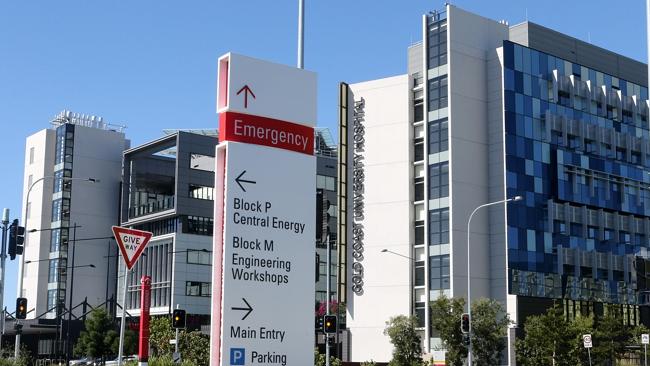
A hi-tech piece of medical equipment with millions at the Gold Coast University Hospital remains idle. Source: News Corp Australia
GOLD Coast Health is holding tours to show off a state-of-the-art, $3.75 million medical scanning machine that in 18 months has never been used for its original purpose.
The intraoperative MRI machine at the new Gold Coast University Hospital is one of only a handful in Australia and can detect tiny cancers before, during and after surgeries but is only being used as a conventional MRI scanner on children.

The Gold Coast University Hospital’s multimillion dollar scanner has never been used for its real purpose. Source: News Limited
“We’re not even using it properly but they bring people through to show it off because it’s so state-of-the-art,” a hospital source said.
“Everyone thinks it’s a joke.”
Hospital staff say the problem is the health service does not have a radiographer to run the machine and cannot afford to move one from another department, or hire another one.
A senior source said he believed only two patients had ever been scanned with the machine in the way it was designed to be used — and that was during training sessions.
“It should be a major asset but it’s embarrassing,” he said.
“It’s a really expensive, flagship piece and it’s not being used properly.
“It’s a pretty sad state of affairs.”
While other departments such as emergency have been allocated extra funding because of how busy they are, surgeons who would use the MRI machine cannot prove it is in high demand.
This means they are performing surgery without the help of the machine to find cancer cells they may have missed.
A Gold Coast Health spokeswoman said the machine was “available” and denied funding was an issue.
“Its availability has recently increased from one to three days and the gradual increase is
due to the technical expertise required to operate the intraoperative MRI, rather than funding issues,” she said.
“Availability is comparable, or better, than other health services that run intraoperative MRI.”
Doctors said they were offered the machine for one day a week but refused, as they believed it was not safe or practical.
The offer was extended to three days but they have refused to back down from their Monday to Friday demand.
Another source said the machine would add an extra level of safety for patients.
“That’s what medicine is about now — let’s do it safer, let’s do it better,” she said.
“We need to get it up and running.”
